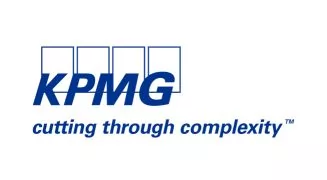This article was previously published in the Financial Post, Tuesday, Oct. 19, 2010
In this the last of a three-part series on going public, Salma Salman discusses what comes after a private firm's IPO.
Your company has gone from private to public, completing the IPO. Now what?
The transition period will trigger a change in attitude on the part of management as they learn to operate under direct and indirect scrutiny.
You should quickly begin implementing and following through on the strategic operating plans that led to the successful fruition of your firm's IPO. More specifically, management must be able to illustrate in short order that it has begun taking steps to implement the new public company's strategic plan.
One of the biggest changes your company will experience is the need to comply with regulatory requirements on matters related to governance, continuous disclosure, certification on internal controls and disclosure controls, and so on.
Governance issues, though always important in a corporate realm, are especially paramount to a public company. The Board of Directors will have overall responsibility for corporate stewardship and need to oversee the activities of management to ensure they are acting in the best interests of the company and its shareholders. The Board should adopt a written mandate in which it acknowledges its governance responsibilities.
The majority of directors in a public company must be independent. Specific board sub-committees, such as the audit committee, nominating and compensation committee, are often established with mandates to oversee various risks faced by the company in wide-ranging areas, such as financial reporting, litigation, technology, ethics, safety and the environment, among others.
One of the regulators' primary objectives is to ensure that disclosure similar to that contained in the IPO offering prospectus is available to the market at all times. Therefore, securities legislation requires a public company to provide this information in the form of their Annual Information Form (AIF), annual and interim financial statements, management discussion and analysis (MD&A), information circular, disclosure of material changes, business acquisition reports, etc.
For each of these filings, there are specific content requirements and filing deadlines that need to be met. For example, your annual financial statements need to be audited by an independent auditor in accordance with Generally Accepted Accounting Principles (GAAP), which, for public companies, will be International Financial Reporting Standards (IFRS) for reporting periods beginning Jan. 1, 2011. Your annual audited financial statements need to be filed no more than 90 days after your company's year end.
The securities regulators perform regular reviews of the continuous disclosure documents filings and can ask questions, provide comments to individual companies, as well as publish general public comments. Management should ensure that the company has proper infrastructure in place to gather, continuously update, and report accurate and complete financial and other material information on a timely basis. Without this infrastructure, it will be a continuous struggle to meet these deadlines and provide useful information to the stakeholders.
CEOs and CFOs of public companies are also required to certify that they are responsible for establishing and maintaining internal controls over financial reporting (ICFR) and disclosure controls and procedures, and that they have designed ICFR to provide reasonable assurance over the reliability of the financial reporting and financial statements in accordance with GAAP. Furthermore, they are required to disclose their conclusions about the effectiveness of ICFR in their MD&A. As a new public company, management should ensure that the firm has appropriate internal control processes in place to allow you to provide these certifications.
In addition to the above, material changes affecting the company's operations and its shareholders must also be disclosed in a press release and in a report to the securities regulators. You will have to prepare for annual meetings and proxy solicitations, and you should ensure that adequate controls and checks are put in place to comply with insider trading rules.
To maintain market interest in the company's securities, management will need to direct marketing efforts not only to existing shareholders, but also to potential investors. The analyst community needs relevant and timely information. As a public company, the management team will need to establish a proactive and ongoing investor relations strategy and a department to execute the strategy to sustain an active after-market interest in the company. The underwriters of your IPO should also be able to help in this regard, by maintaining good distribution and support for your stock and stimulating ongoing interest in your company.
With this done, you have successfully completed the journey of taking your company public. Now a new life begins in the public spotlight-with a different set of challenges and many opportunities for growth and longterm rewards. Stay committed to your vision, remember your accountability to the stakeholders, consult with your advisors, and you will confidently face the challenges that come along the way and seize the opportunities for growth and high long-term rewards.
The content of this article is intended to provide a general guide to the subject matter. Specialist advice should be sought about your specific circumstances.

